Kimonos in Traditional Japanese Weddings: Uchikake, Shiromuku, and More
A Journey Through Kyoto’s Timeless Wedding Traditions
- Introduction: Kyoto, the City of Timeless Weddings
- The History of Wedding Kimonos in Japan
- The Main Types of Japanese Wedding Kimonos
- Groom’s Wedding Attire
Introduction: Kyoto, the City of Timeless Weddings
Kyoto is the beating heart of Japan’s cultural heritage. While modern couples may choose sleek Western-style weddings, many brides and grooms still turn to the timeless elegance of Japanese wedding kimonos. These garments are not only beautiful but carry centuries of symbolism and tradition.
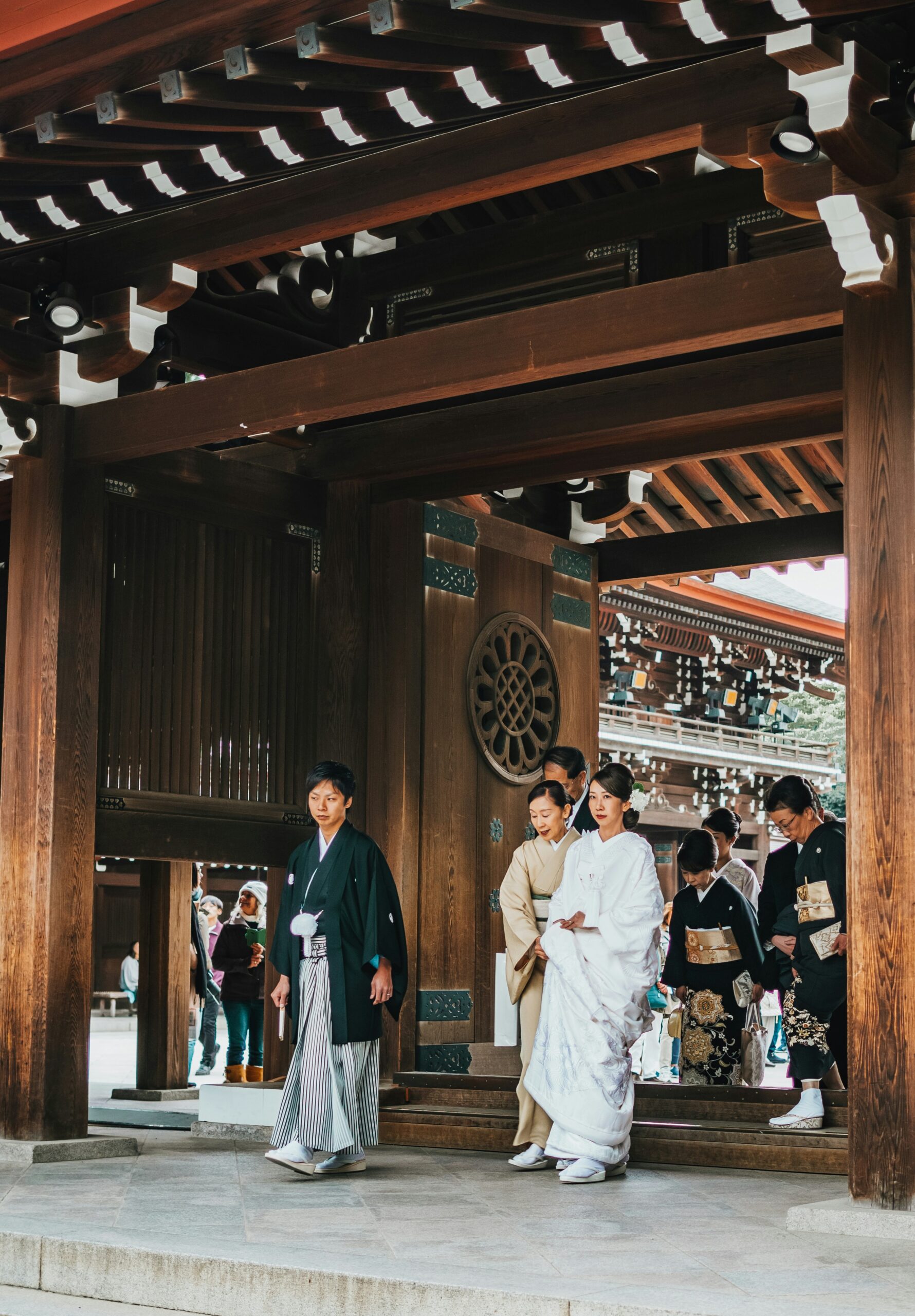
A bride in the pure white shiromuku, symbolizing purity and new beginnings
In Kyoto—the ancient capital of Japan—shrines, temples, and traditional gardens create the perfect setting for couples who want a ceremony rooted in culture. From the striking uchikake to the pure white shiromuku, wedding kimonos are more than attire; they are a bridge between past and present.
If you are planning a wedding photoshoot in Kyoto or simply want to understand the meaning of these stunning garments, this guide will walk you through everything you need to know.
📸 Book your wedding kimono photoshoot in Kyoto here
The History of Wedding Kimonos in Japan
The tradition of wearing elaborate wedding kimonos dates back to the Heian period (794–1185), when aristocrats used layered silk robes to display wealth and refinement. Over the centuries, the designs evolved, absorbing influences from samurai families, Shinto rituals, and modern fashion.
Kyoto, as Japan’s imperial capital for over 1,000 years, preserved these customs. Today, the city remains the most authentic place to experience a wedding ceremony in kimono. Brides walking through Shinto shrines like Yasaka Jinja or Heian Jingu in a shiromuku are a breathtaking sight.
The Main Types of Japanese Wedding Kimonos
1. Shiromuku (白無垢) – The White Kimono of Purity
The shiromuku is the most iconic Japanese bridal kimono. Entirely white from head to toe, it symbolizes purity and the bride’s willingness to embrace her husband’s family. The word “muku” means purity, and the absence of color reflects a new beginning.
- Often paired with a white wataboshi (bridal hood) or tsunokakushi (headdress hiding the “horns of jealousy”).
- Made of silk with intricate embroidery of cranes, flowers, or waves—symbols of longevity and good fortune.
- Traditionally worn for the ceremony itself, especially at Shinto shrines in Kyoto.
2. Uchikake (打掛) – The Regal Over-Kimono
The uchikake is the most dazzling garment a bride may wear. This robe is not tied with an obi but draped over another kimono, trailing behind like a royal cape.
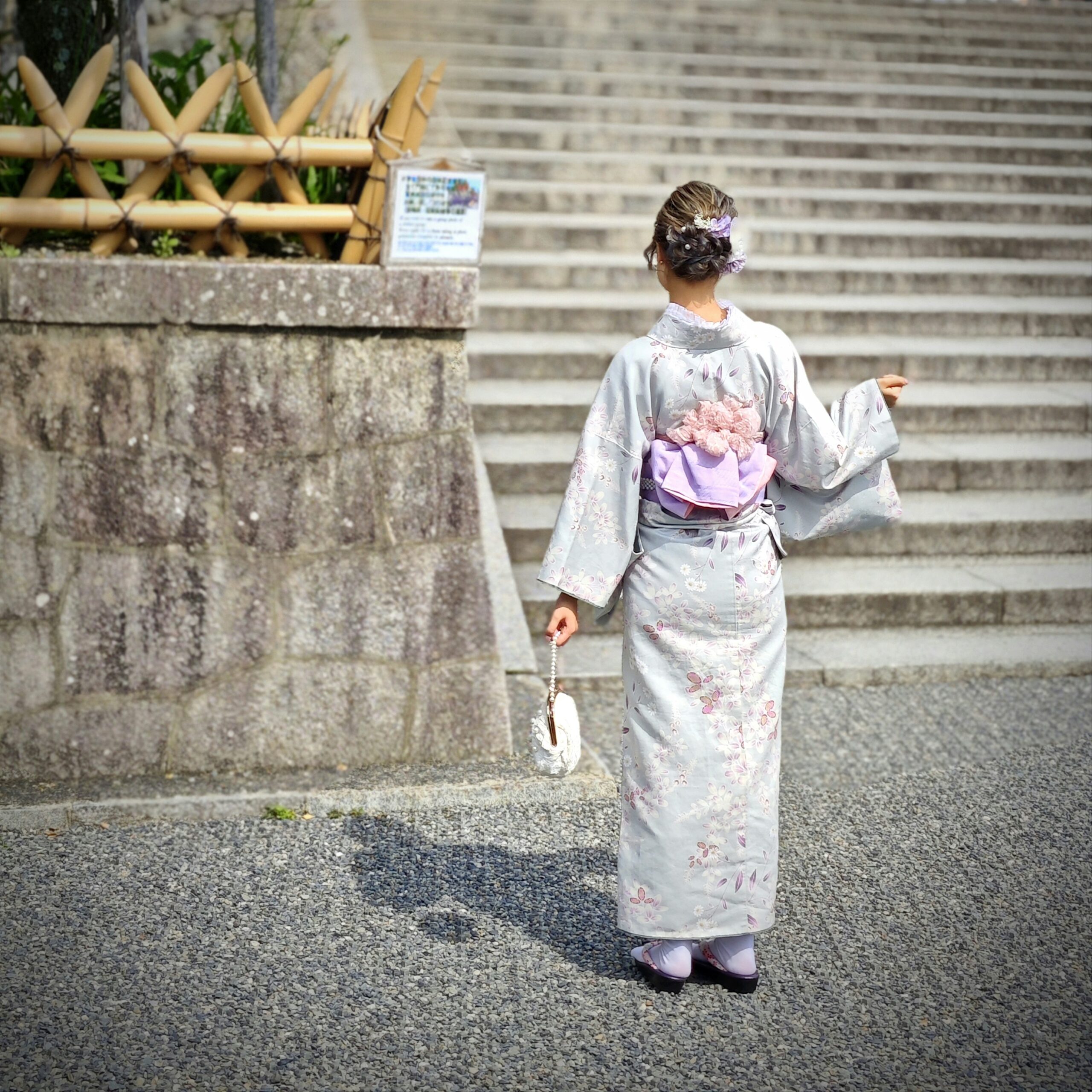
The magnificent uchikake draped like a royal cape, featuring intricate embroidery
- Brightly colored, often in red or gold.
- Embroidered with motifs of cranes (marriage longevity), pine trees (strength), and phoenixes (renewal).
- Used for both ceremonies and wedding photoshoots, making it a favorite in Kyoto’s photography studios.
3. Iro-uchikake (色打掛) – Colored Splendor
Unlike the shiromuku’s white, the iro-uchikake introduces vibrant colors. Each hue carries symbolic meaning:
- Red: Good luck, fertility, and happiness.
- Gold: Prosperity and success.
- Green: Renewal and growth.
Couples in Kyoto often combine a shrine ceremony with a colorful photoshoot around Gion or Maruyama Park, wearing iro-uchikake to capture the city’s seasonal beauty.
4. Hikifurisode – The Long-Sleeved Kimono for Brides
This kimono is characterized by its dramatic long sleeves. Unlike the uchikake, it is tied with an obi and may be worn after the formal ceremony. It bridges the line between tradition and modern bridal fashion.
Groom’s Wedding Attire
While the bride shines in silk embroidery, the groom typically wears a montsuki haori hakama:
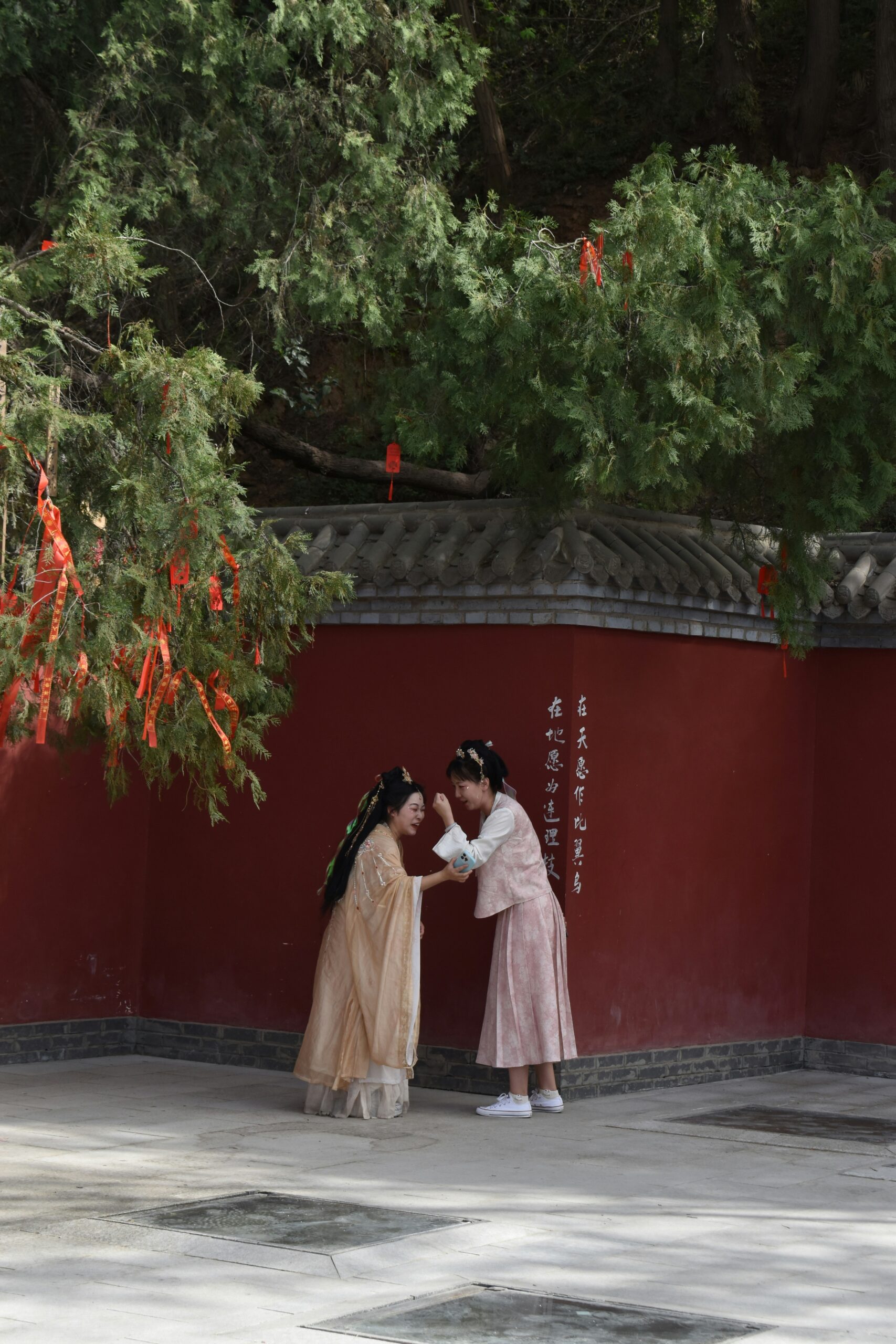
The groom’s traditional montsuki haori hakama creates elegant contrast with the bride’s colorful kimono
- Montsuki: A black kimono with the family crest.
- Haori: A half-coat jacket.
- Hakama: Pleated trousers, often in gray or striped patterns.
This contrast emphasizes the bride’s colorful beauty while grounding the ceremony in balance.
Kyoto: The Perfect Backdrop for Kimono Weddings
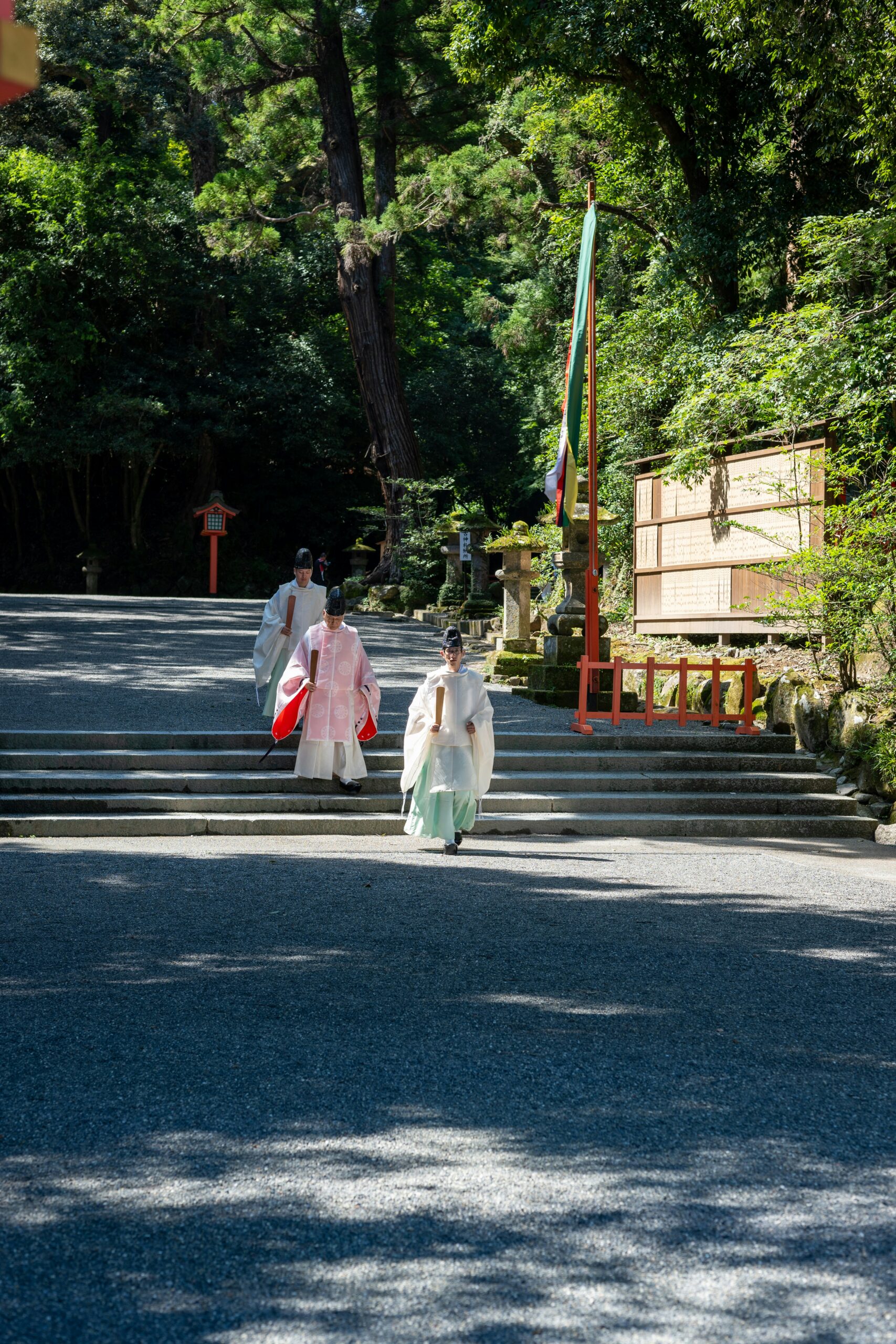
A wedding couple at the iconic Heian Shrine, one of Kyoto’s most beloved ceremony venues
Shrines and Temples
- Yasaka Jinja: Iconic for weddings in the Gion district.
- Heian Jingu: Famous for grand ceremonies with vermilion gates.
- Kamigamo Jinja & Shimogamo Jinja: UNESCO sites with ancient rituals.
Seasonal Beauty
Kyoto’s four seasons add to the magic of kimono weddings:
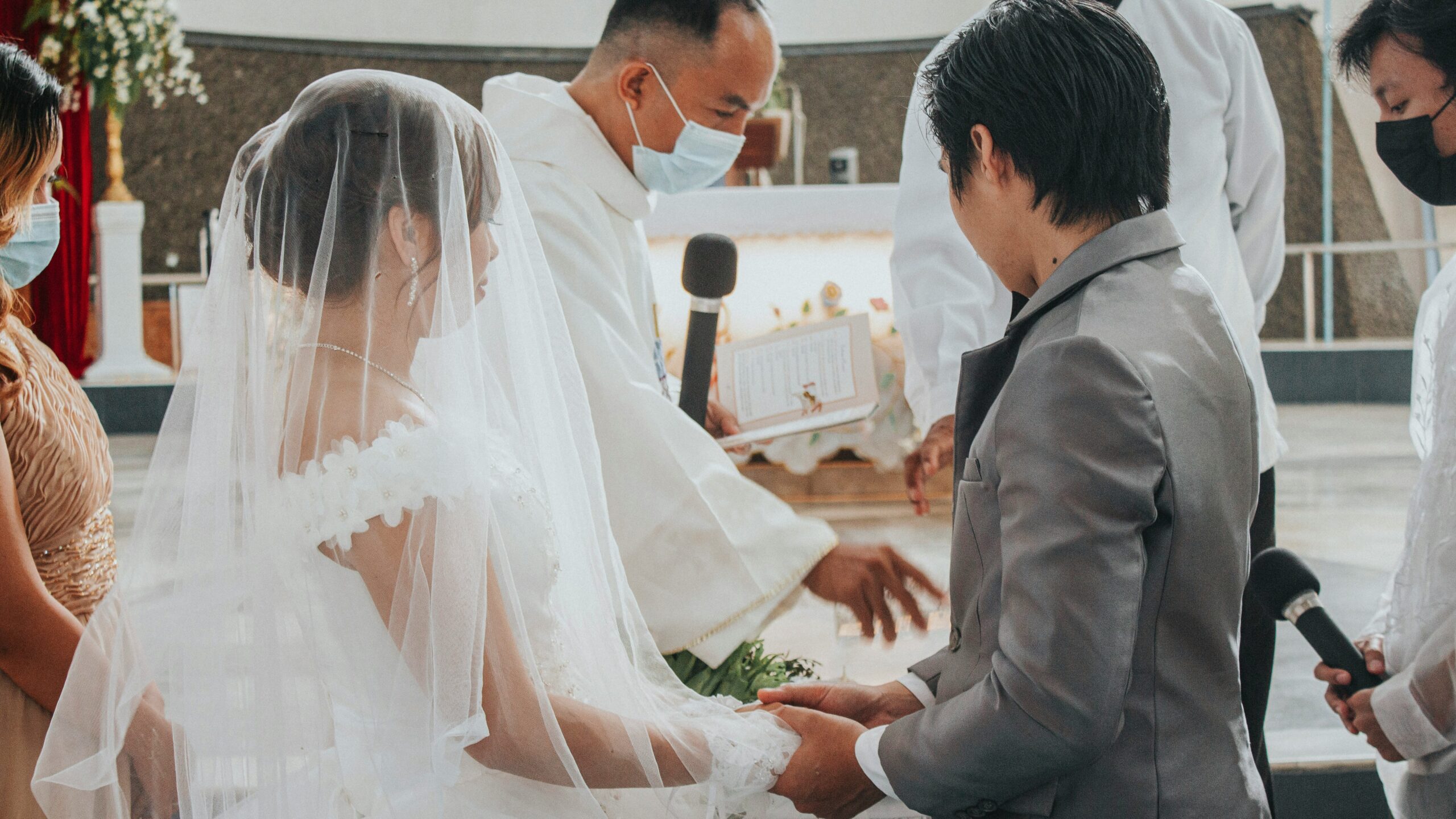
Autumn in Kyoto: A bride in red iro-uchikake harmonizing with the season’s colors
- Spring (Sakura): Cherry blossoms create romantic scenery.
- Summer: Lush greenery enhances vibrant kimono colors.
- Autumn: Red maple leaves harmonize with gold embroidery.
- Winter: White landscapes echo the purity of shiromuku.
Symbolism in Embroidery
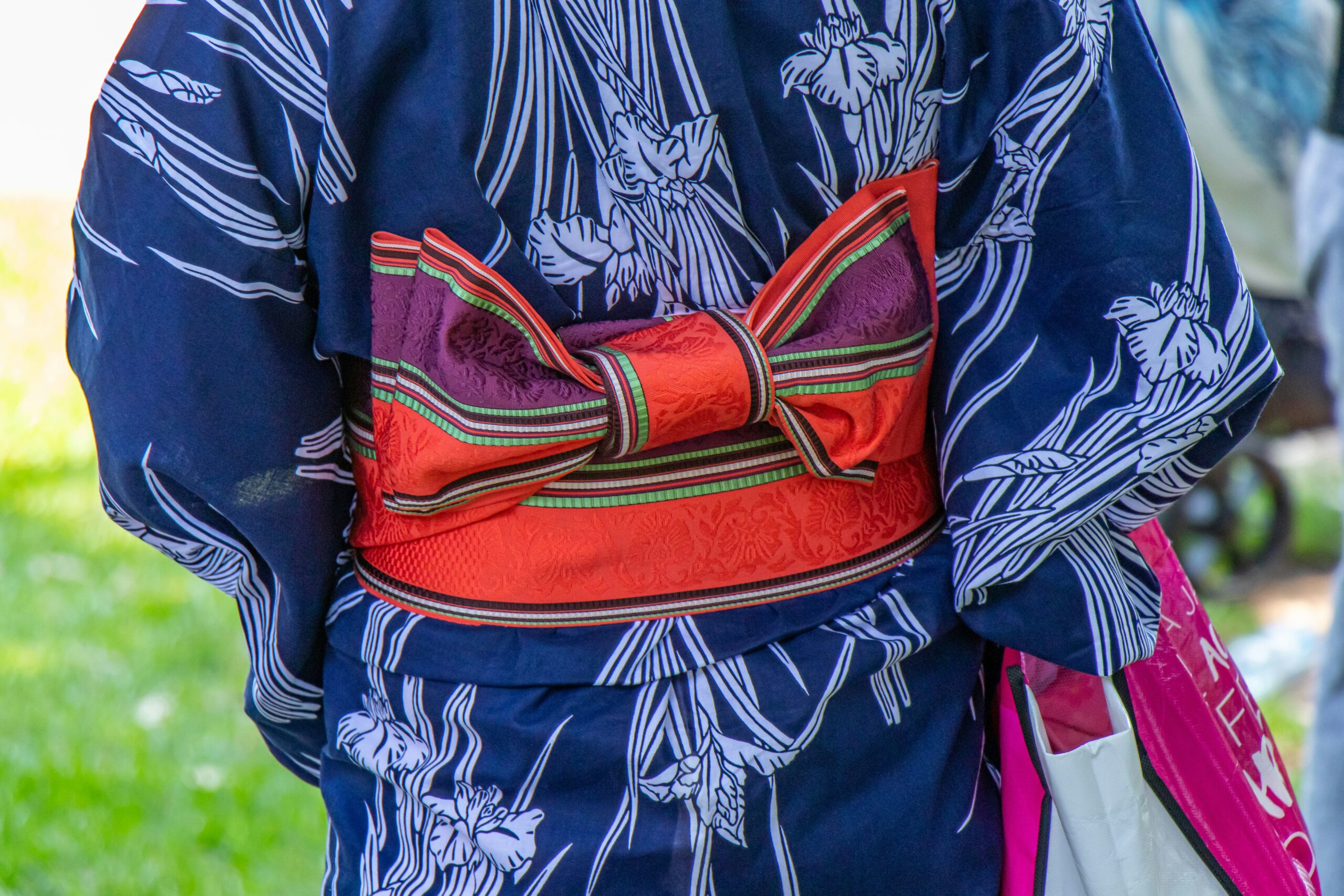
Intricate embroidery details: Every stitch tells a story of love, longevity, and good fortune
Every stitch in a wedding kimono carries meaning:
- Cranes: Eternal love, as cranes mate for life.
- Pine Trees: Longevity and resilience.
- Plum Blossoms: Renewal and perseverance.
- Phoenix: Transformation and rebirth.
When photographed in Kyoto’s historic streets, these symbols tell a story that transcends fashion.
The Modern Appeal of Kimono Weddings
Even today, many Japanese and international couples choose traditional kimono weddings in Kyoto. Why?
- Authenticity: Kyoto preserves original shrines and rituals.
- Aesthetic: The visual beauty is unmatched.
- Photography: Kimono photoshoots in Gion or Arashiyama create timeless memories.
Tips for a Perfect Kimono Wedding in Kyoto
✨ Book a professional kimono photoshoot in Kyoto now
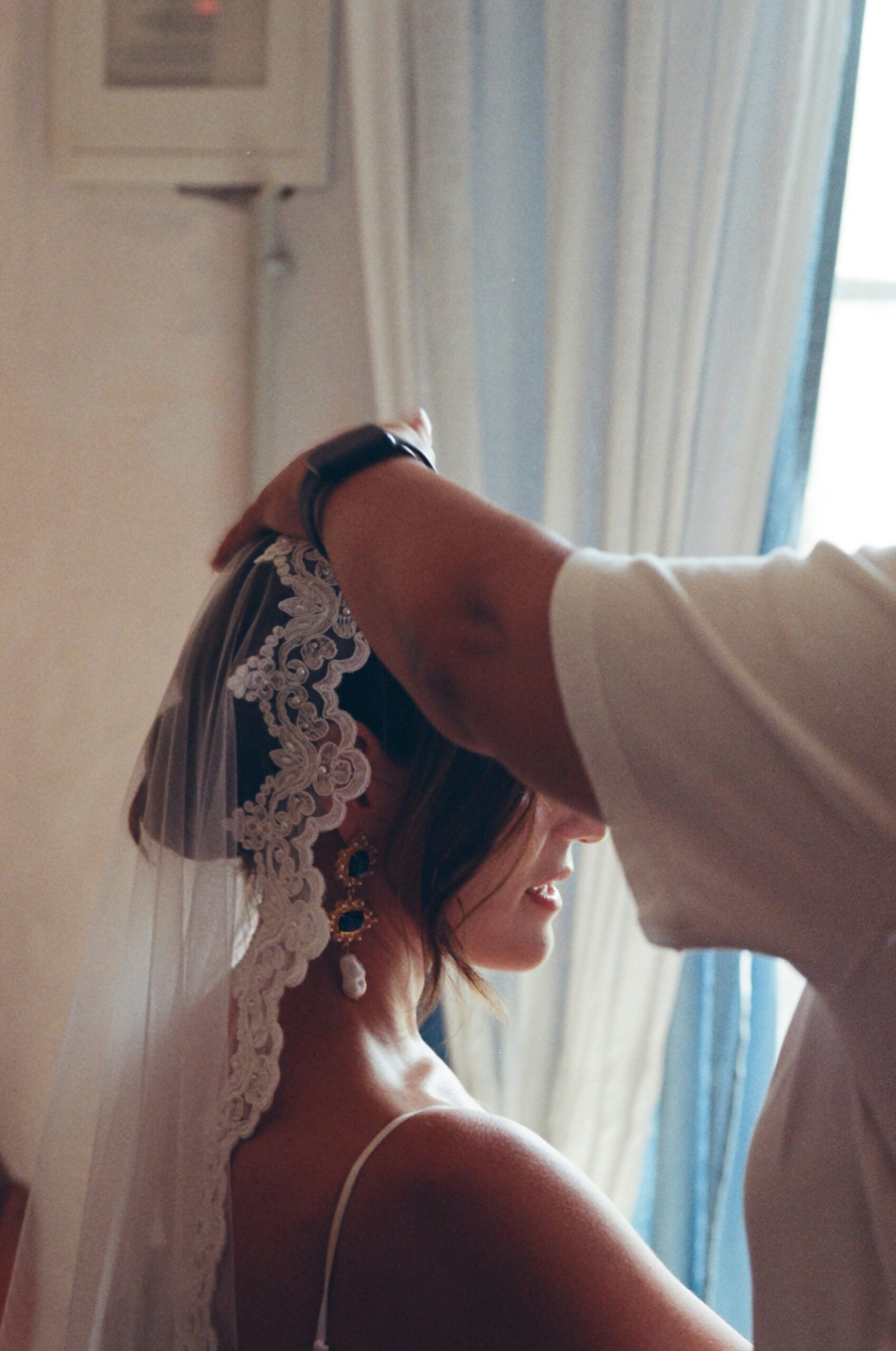
The complete bridal ensemble: shiromuku with the traditional tsunokakushi headdress
- Reserve early: Kyoto shrines are popular and often booked months in advance.
- Work with local photographers: They know the best hidden spots for stunning images.
- Mind the season: Spring and autumn are busiest, but also most scenic.
- Try multiple kimonos: Many studios allow brides to wear shiromuku for the ceremony and uchikake for photos.
Why Photography Matters
Your wedding lasts one day, but your photos last a lifetime. Kyoto’s kimonos, shrines, and gardens deserve professional capture. Local studios offer packages with styling, kimono rental, and location shoots.
📍 Visit AllPhotos Kyoto to explore kimono wedding photography packages.
Conclusion: Tradition Meets Forever
Wedding kimonos are more than clothes—they are vessels of heritage, love, and beauty. In Kyoto, they find their perfect stage. Whether you choose a pure shiromuku, a vibrant iro-uchikake, or a luxurious uchikake, your day will be infused with centuries of meaning.
For couples seeking authenticity and unforgettable memories, Kyoto is the ultimate choice.
👉 Don’t just dream about it. Book your kimono wedding photoshoot in Kyoto today


コメント